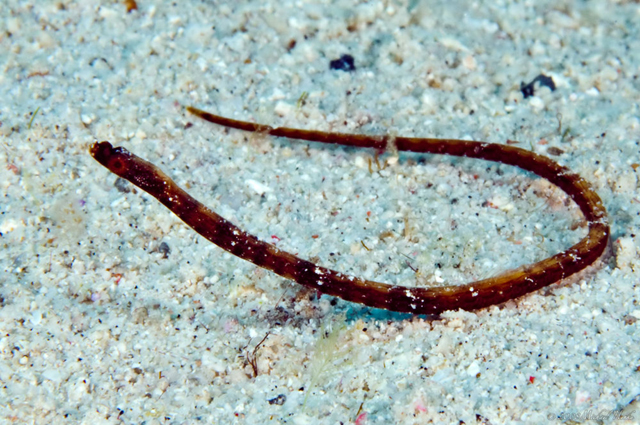| Syngnathidae (Pipefishes and seahorses), subfamily: Syngnathinae |
| 12 cm TL (male/unsexed) |
|
reef-associated; marine; depth range 4 - 26 m |
| Indo-Pacific: Sri Lanka, Taiwan, Thailand, Vietnam, Western Australia and Queensland (Australia), and Tutuila Island, American Samoa, Marshall Islands, |
|
Dorsal soft rays (total): 19-20; Anal soft rays: 3-3. Brown with about 4 broad black bands on trunk, each separated by a thin white bar (Ref. 48635).
Description: Characterized by rings 14 + 33 - 35; 10 caudal rays; discontinuous superior trunk and tail ridges; inferior trunk ridge ends at anal ring; confluent lateral trunk ridge with inferior tail ridge; discontinuous median dorsal snout ridge with 2-3 semi-isolated spines or crests; head and body with short filaments; length of snout 3.1-3.8 in head length; depth of snout 1.7-2.1 in snout length; head length 10.0-11.3 in SL (Ref. 90102). |
| Adults inhabit rock or coral habitats. Ovoviviparous (Ref. 205). The male carries the eggs in a brood pouch which is found under the tail (Ref. 205). Males may be brooding at about 10 cm SL. Also seen in sheltered water, often on rubble bottoms in 2-12 m (Ref 90102). |
|
Least Concern (LC); Date assessed: 02 August 2016 Ref. (130435)
|
| harmless |
Source and more info: www.fishbase.org. For personal, classroom, and other internal use only. Not for publication.

